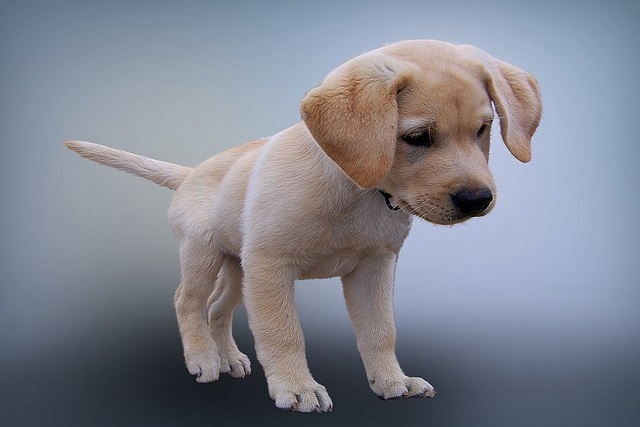
How can I tell if my dog's heatstroke is serious
Let’s be real: It’s a sticky August morning in Los Angeles, and you took your 2-year-old Golden Retriever, Max, for a walk a little later than usual
You’re mid-walk in Phoenix’s blistering summer heat with your 7-month-old Lab mix, when he suddenly stops—lifting one paw, then another, like he’s stepping on hot coals. You kneel to check, and your heart sinks: His paw pads are rough, cracked, and warm to the touch, like dried-out leather. Rummaging through your bag, you spot a tube of paw balm a friend gave you, but you hesitate: Is paw balm good for dogs, or will it make him sick if he licks it? This doubt is exactly what new U.S. dog parents face, but the answer is a resounding “yes”—paw balm is one of the kindest, most effective ways to protect your pup’s paws, as long as you choose the right one and use it wisely.
The science behind why paw balm works is simple (no fancy terms needed). A dog’s paw pads have a tough outer layer of keratin (like our fingernails) that shields sensitive inner tissue—but unlike our skin, they don’t produce much natural oil. Harsh elements—summer pavement that hits 120°F, winter salt, or even dry apartment heat—strip away what little moisture they have, leaving pads brittle and prone to cracking. Paw balm fixes this by acting as a “moisture lock”: ingredients like shea butter, beeswax, or coconut oil sink into the keratin layer to nourish dryness, while forming a gentle barrier against irritants. My Austin vet, who recommends it to first-time owners year-round, explains: “The best paw balms are non-toxic—since dogs will lick their paws—and free of fragrances or chemicals that irritate their skin. It’s not just about softening paws; it’s about preventing pain and infections from cracked pads.”
Let’s break down the practical steps to use paw balm, with real stories from other owners. First, choose the right paw balm: Look for labels with 100% natural ingredients—skip anything with artificial scents, parabens, or petroleum jelly (some cheap brands use it, but it can clog pores). My Denver neighbor swears by a beeswax-based balm for her Husky’s winter paws; it kept salt from drying them out. Second, prep paws before applying: Wipe paws with a damp cloth to remove dirt, salt, or debris—if you skip this, balm will trap gunk in cracks. I learned this the hard way with my Lab mix; his paws got red until I started cleaning first. Third, apply gently (and use treats!): Warm a pea-sized amount between your fingers, then massage it into each pad—focus on cracked edges. If your pup licks it off, slip on soft paw socks (use positive reinforcement: give a freeze-dried treat when he lets you put them on!). My LA friend’s Chihuahua hated socks at first, but after a week of treats, he now sits patiently for his “paw spa” routine.

This ties directly to U.S. pet rules, culture, and daily life—no forced additions. First, responsible paw care aligns with compliance: Keep your dog’s rabies vaccine records handy (required in every state, and apartments demand proof) and always carry poop bags—fines hit $300 in NYC for skipping this, and a dog with healthy paws is easier to walk (and clean up after!). For apartments, set up a “paw station” by the door: a towel, your paw balm, and treats—this turns post-walk care into a quick, consistent habit (no more chasing your pup around the couch). Community etiquette matters too: Avoid walking on hot pavement during midday (test it with your hand—if it’s too hot for you, it’s way too hot for their paws!)—paw balm applied 15 minutes before walks adds an extra layer of protection. And never punish your dog if he resists—if he pulls his paw away, take a break, offer a treat, and try again. Punishment breaks trust; patience builds it.
Watch for small wins: Your dog stops limping, lets you touch his paws without flinching, or trots happily on walks again. Paw balm isn’t a “luxury”—it’s a necessity for pups facing harsh U.S. weather. Is paw balm good for dogs? Absolutely. It’s a simple way to show your pup you care about their comfort, one gentle massage at a time. That’s the peace of mind every new dog parent needs.

Let’s be real: It’s a sticky August morning in Los Angeles, and you took your 2-year-old Golden Retriever, Max, for a walk a little later than usual

You're enjoying a summer afternoon at the park when you notice your dog has stopped panting and appears disoriented - their gums are bright red

Let’s paint the picture: You’re in your Denver apartment, watching your 4-year-old Boston Terrier, Ruby, plop down mid-play session with her favorite toy

Many dog owners notice their pets nails seem shorter after regular walks,but how much does this daily activity actually help?The answer depends on where you walk—concrete sidewalks or asphalt streets gently file nails as a dog's paws hit the ground

Most dog owners notice their pup scooting across the carpet at some point, but few connect it to impacted anal glands. These small sacs near a dog’s rectum secrete a scent for marking territory

Most vets agree that regular dog teeth cleaning is key to avoiding painful dental issues later. For healthy adult dogs, a professional cleaning at the vet’s office every 12 to 18 months usually works well.